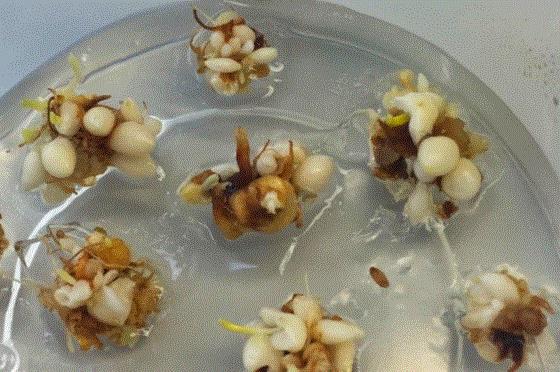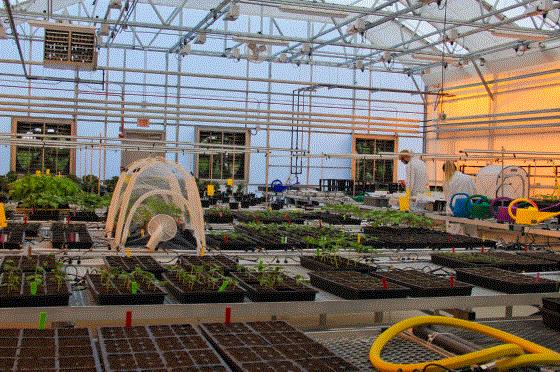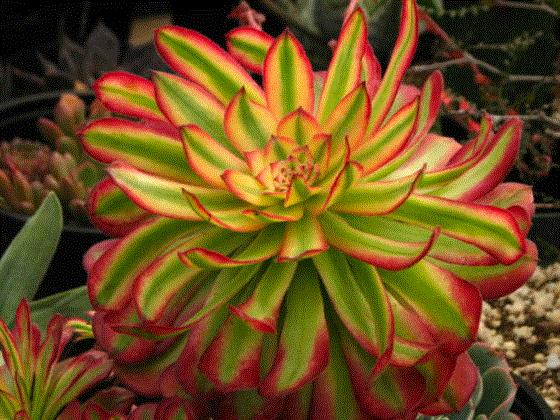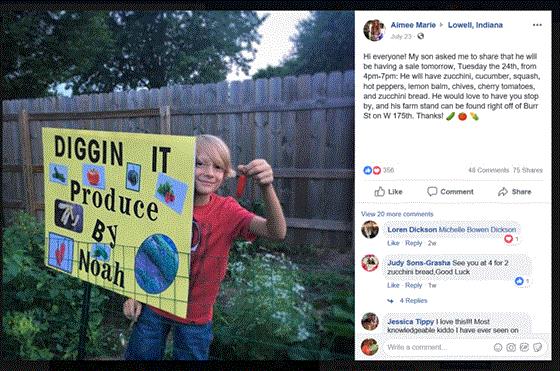Dümmen Orange announced tulip breeding breakthrough
Twenty years or more. That’s about how long it takes to bring a new tulip to market—not a very effective way to respond to consumer trends. When I was in the Netherlands in March to attend year three of the Tulip Trade Event, one of our visits was to Hobaho, a tulip breeder acquired by Dümmen Orange two years ago. There I learned about how long it takes to breed and produce a new tulip variety, but also what Hobaho and their partners were doing about it via modern technology. And they’ve just announced a big piece of that.
Hobaho, in collaboration with IribovSBW—a Dutch laboratory that provides plant propagation, quality-control, diagnostics and molecular breeding services—has figured out how to use tissue culture to greatly speed up the rate of multiplication of a tulip bulb. Normally, one tulip can produce an average of three more bulbs per growing season. With tissue culture, one bulb can now produce several thousand. That can cut years off the stock-build-up phase of introducing a new variety.

Last spring, they completed successful flowering trials of the TC tulips at the Hobaho Testcentrum Siergewassen (Ornamental Crops Trial Centre) in Lisse, the Netherlands.
Said Hans van den Heuvel, Managing Director R&D for Dümmen Orange, in the announcement, “A breeding process that takes more than 20 years is not an effective way of responding to changes in consumer and market needs. This revolutionary breakthrough drastically changes the dynamics of the tulip breeding process that eventually should not take longer than six to seven years. It gives us a good competitive edge and the confidence that we and our partners can add value in this important product group.”
This isn't the only tulip technology breakthrough that Dümmen Orange is working on. Last fall, they announced the successful sequencing of the tulip genome in partnership with biotech companies BaseClear and Generade. They’re in the midst of analyzing all the data.
Interestingly, the tulip genome is the largest ever sequenced; it’s nearly 11 times larger than the human genome. Amazing, eh? With all those genes, I’m surprised tulips aren’t growing us instead of the other way around. They must be at least as smart as dolphins or pigs.

Bower & Branch acquires Organic Plant Magic
The consolidation continues … and this time at the hands of one of our industries newest entities, which is also one of our first online and mobile shopping brands.
Bower & Branch announced today that it has acquired the organic fertilizer company Organic Plant Magic. If you aren’t yet familiar with Bower & Branch, they do online sales of trees, shrubs, perennials and other plants (an ever-increasing line) online, but fulfill them through partner growers and independent retailers.
Sid Raisch, President and CEO of Bower & Branch, said in the press release, “This acquisition has been in the works for a while. Aligning Organic Plant Magic within Bower & Branch is a strategic opportunity that ensures our supply chain will grow seamlessly as our online sales continue to grow.”
“This partnership is the next generation of business models,” said Organic Plant Magic founder Kerry Richardson. “Through the unique robust capacities of Bower & Branch to speak directly with consumers, growers and the marketplace, we now have the ability to reach and assist more people and the environment, as well as continue to develop even more helpful innovations.”
Kerry will continue to serve on the Bower & Branch Board of Directors and co-founder Kevin Richardson will join the Bower & Branch product development team.
I asked Sid, via email, my usual “Why?” question. I got one hint when I looked at the packaging of Organic Plant Magic and Bower & Branch’s Elements Fertilizer—it was clear the former manufactures the latter. Sid confirmed that.
“We were becoming the majority of the sales of Organic Plant Magic, which left both of us vulnerable to the other,” he offered as one of three reasons for the acquisition. “Bower & Branch needed to secure the future availability of the Elements Fertilizer and some other products we were working together on to bring to market, and the Richardsons had nearly all their eggs in one basket, so they put the rest in.”
The other two reasons focus on the success of the customer.
“In brick-&-mortar garden centers, only around 10% to 15% of customers who buy plants leave with fertilizer, which I think we all agree is essential for the establishment and health of our plants,” Sid said. “We’ve found that online, we get well over 60% to buy Elements Fertilizer and at a much higher average price point than most stores offer. This tells us there is growth potential, but most importantly, there is success potential for more consumers.”
In addition:
“Across America, people always tell us they have some form of crappy soil. Most areas it is clay, some it is sand and rarely is it loam. This is because the subsoil that is excavated when homes are built is smeared around and that's the majority of what everyone is planting in. Elements Fertilizer has the ingredients to change this subsoil (sub meaning not really soil at all) into something a plant can sustain in at some level.”
To help ensure that customers actually make use of the fertilizer, it’s a required part of Bower & Branch’s three-year plant guarantee.
Organic Plant Magic has an interesting back story that starts with ski patrolling in Alaska and a chance encounter with organic plant guru Jeff Lowenfels. You can read that story HERE.
My only challenge with Bower & Branch is getting them mixed up with Boll & Branch, the fancy bed linen supplier.

Valent opens Biorational Research Center
Managing editor Jen Zurko did a day trip to the far north suburbs of Chicago a couple weeks ago to cover the following story:
Have you ever heard the term “biorational”? (Not “irrational,” like my 9 year old can be sometimes.) Simply, it means a pest-control product that’s safe for humans, animals and the environment. But what it specifically refers to is mimicking what happens in nature and applying it for the prevention of insects and diseases of food crops and plants. That’s what Valent BioSciences (a division of Valent USA) is looking to do with their biorational products.
In order to meet these goals, they’ve opened a new facility called the Biorational Research Center, located at the Lake County Innovation Park in Libertyville, Illinois. Publisher Paul Black and I were invited to attend the grand opening last week to learn about the company’s plans for the facility and take tours through some of their labs and research areas.
Valent USA President and CEO Andy Lee began the day by touching on the history of Valent, which was acquired by Japanese chemical company Sumitomo in the early 1990s, and their plans for the future. The BioSciences division was created in 2001 after Sumitomo acquired Abbot Laboratories, adding a line of PGRs, bioinsecticides and biorational products to their assortment.
 Ray Nishimoto, head of Sumitomo Chemical’s Health & Crop Sciences (which owns Valent USA), officially opens Valent’s Biorational Research Center in Libertyville, Illinois.
Ray Nishimoto, head of Sumitomo Chemical’s Health & Crop Sciences (which owns Valent USA), officially opens Valent’s Biorational Research Center in Libertyville, Illinois.
Their main focus has always been in the agriculture sector, however, with the acquisition of Mycorrhizal Applications in 2015, Valent is now positioned to conduct research and develop products for the ornamentals greenhouse market. They’re also looking at hydroponics and indoor agriculture (which isn’t too much of a stretch from their current product lineup).
Andy said that they recognize that the industry is changing and that consumers are driving that by demanding more transparency with what’s being applied to their food while it’s growing. Ray Nishimoto, head of Sumitomo’s Health & Crop Sciences and who made the trip from Japan for the center’s opening, agreed. “More important for the future is how we get to more sustainable practices,” he said.

The afternoon at Valent
The key function of the facility, at least in the beginning, will be a concentration on soil health. They will use “biorational tools” to help figure out how growers can get the best-quality crops with the highest yield using as few chemicals as possible. They’ll also be working on disease and pest management, and using the latest technology to figure out how to solve the problem of food waste.
We spent the afternoon touring 16 different research areas, including 4,400 sq. ft. of Nexus research greenhouses equipped with Argus climate controls. We also got an inside look inside their plant pathology and entomology/nematology labs, where their focus is on the prevention of vector-borne diseases and invasive insects.
“We’re intensely serious about protecting the food chain, from seed to salad, because we’re always under attack,” said Dr. Deanna Branscome, Crop Protection Research Manager. She’s the one who talked me into putting a live Madagascar hissing cockroach on my hand. (I’m still not sure how I let that happen.)
 In the plant pathology lab, they actually “grow” diseases to test new and existing products to see what works and what doesn’t. The new facility will give them more consistent results.
In the plant pathology lab, they actually “grow” diseases to test new and existing products to see what works and what doesn’t. The new facility will give them more consistent results.
 Valent built four research greenhouses to help their scientists simulate field growing conditions, complete with an automated climate-control system, on-bench heating and ebb-and-flood hydroponic capabilities. Now they can grow from the young plant stage to when the plant is close to harvest. They can have up to 10 experiments going on in one bay.
Valent built four research greenhouses to help their scientists simulate field growing conditions, complete with an automated climate-control system, on-bench heating and ebb-and-flood hydroponic capabilities. Now they can grow from the young plant stage to when the plant is close to harvest. They can have up to 10 experiments going on in one bay.

Research: Extra dissolved oxygen doesn’t help
In my Cultivate’18 coverage, I noted at least one product that can increase the amount of dissolved oxygen (DO) in your irrigation water. It’s thought that, if a little oxygen is good, then more must be better.
Not so fast.
Professor Paul Fisher, of my alma mater the University of Florida and a member of CleanWater3 research group, emailed me the results of some new research on DO in both mist propagation water and irrigation water, and whether it offered any benefits.
The results? Increasing the DO saturation in mist irrigation water by 300% over the standard saturation level produced no difference in plant growth in their propagation trial. In fact, the fine droplet size allowed for more rapid diffusion of oxygen, so the additional DO wouldn’t stick around long anyway.
They also tested the same super-saturated irrigation water on 10-cm (4-in.) pots of bedding plants and saw no increase in root or plant growth. The researchers did say that you would get better results if the plants were grown in water-logged, hypoxic conditions, but that it’s preferable to have an adequate porosity in your substrate.
The bottom line—from this study, anyway?: Grow in a mix with adequate air porosity and avoid overwatering and your plants will get all the oxygen they need.
To read the full research paper, click HERE.

Altman is a breeding company?
I’ve known Ken and Deena Altman a long time, and I’ve always considered them a big regional grower that specializes in succulents from their San Diego county base. Thanks to the succulent trend, they’ve become a national player in that products (the world’s largest grower of succulents, in fact). It was a love of succulents that got the two Berkeley hippies into the business in the first place (you can read their history in my GrowerTalks story from December 2016).
What I didn’t realize is that the Altmans have been slowly, but surely, turning themselves into a breeding company, too. I learned this when I interviewed them in 2016 and they told me they had two succulent breeders on staff. They started applying for patents on their new varieties in 2009 and today have more than two dozen patented succulents (such as Aeonium Mardi Gras, below) with more patents pending.

I was reminded of their breeding when they launched a line of garden roses called True Bloom at the California Spring Trials. There we met rose breeder Ping Lim, who came to Altman’s in 2012 from a rose breeding stint at Bailey Nursery, where he bred their Easy Elegance line.
I bring this up only because I’m curious if other large growers have also instituted breeding programs. I haven’t heard of any, but I’m often the last to hear this kind of stuff. If you're breeding, or know of someone who is, clue me in HERE.
Interestingly, we think of breeders as either the giants—the Balls, Syngentas, Sakatas and Dummens of the world—or else the “backyard” breeders like Brent Horvath or David Kerley who are good enough to get their plants into international distribution. But we don’t generally think of growers—especially mass market growers—as breeders. This sort of vertical integration is rare, but interesting. I can see it with specialty plants, like succulents, where there are no big breeders. And, of course, growers have been finding and propagating sports for years ... but that's not breeding. Roses, however, is a mainstream crop with lots of breeding. What’s next for Altman’s? Petunias and geraniums?

Learn what the new CEAC Director has learned
Dr. Murat Kacira is the new Director of the Controlled Environment Agriculture Center (CEAC) at the University of Arizona in Tucson, recently taking over from the esteemed Dr. Gene Giacomelli. Dr. Kacira has been on a continued question of “new information, challenging ideas and the application of new technologies to one’s own research and teaching endeavors,” and he will be sharing highlights of that quest in an in-person and webcast presentation called “My CEA Travelogue 2018: Learning & Sharing Recent Advances in Controlled Environment Agriculture."
It's scheduled for August 31 at 4:15 p.m. MST.
Says Dr. Kacira, “… over the past year or so, I have had the opportunity and privilege of travelling across the globe in search of these exciting experiences as they relate to Controlled Environment Agriculture.” You can register for the webcast HERE.
If you can attend the live event, there are refreshments and a get-acquanted event before the start of the presentation.
Oh, as for renowned previous director Prof. Gene Giacomelli? He may have retired from his duty as head of the CEAC, but he's returning full bore to his research and teaching endeavors.

What? Even battery blowers?
I’m all for a bit of peace and quiet—especially during the early morning coffee and the late afternoon glass of wine—but I’m not for banning the power equipment that makes the garden a pretty place to enjoy said beverages. However, some homeowners, HOAs and communities can’t stand any noise at any time and they want to ban leaf blowers. That’s bad news for you landscapers … especially if you think you can switch to battery power and be safe.
Apparently not! Some towns have banned ALL blowers, citing everything from noise to air pollution, stirring up pollen, blowing twigs in kids’ eyes, causing erosion …
Which is why you should tune into the webinar hosted by the Outdoor Power Equipment Institute (OPEI) and the National Association of Landscape Professionals (NALP, two organizations on the front line of this issue.
It will be Wednesday, August 29, at 1:30 p.m. EDT.
The webinar will feature landscaper Evan Dackow, owner of Jolly Green Tree on Long Island, New York. Evan has been fighting leaf blower bans for years. He will share his experience with leaf blower bans on Long Island (which have been considerable, and crazy, based on my own brief research), how he's worked with communities for commonsense solutions and lessons for other landscapers on how they can get engaged with their local officials.
The webinar is free for NALP members and $39 for non-members. Learn more and register here: https://www.landscapeprofessionals.org/nalp/nalp/events-education/webinars.aspx.

Meet Noah, he's our future
I got a note this week from Jim Kerwin, Manager of the Gardens, Grounds and Greenhouses here at Ball Hort:
Over the weekend, I met a kid in my neighborhood who grows this huge garden and then sells all his produce. His name is Noah and he is really into gardening and has been since he was five.

I instantly thought of the industry campaign, “Seed Your Future.” This is exactly what we should be promoting. Talking with him and hearing this 12-year-old’s passion and love of gardening was inspirational.
He is a Facebook hit in my town of Lowell, Indiana, and sells everything out in just a few hours. Everybody in town loves this kid, and his passion is infectious. Noah’s Mom posts things on the town’s Faceook page.
This kid is the real deal.
Thanks for sharing, Jim! We need as many Noahs as we can get … and we need Noah to help create other Noahs … and Noras. If we can’t convince kids that gardening is cool, maybe he can.
Finally …

Here’s a fascinating little BBC news item from July 30 about how pub and shop owners in England are finding out that flowers—lots of them—can make their business “Instagramable,” with consumers coming from around the world to see and photograph them. Talk about great free publicity! (Click the image above to watch.)
According to the report, Instagram says that 80% of their users follow at least one business. A beautiful business attracts attention and photographs and more publicity … and wouldn’t you go inside and perhaps buy something, too?
We own the product, so I don’t know why more retailers or even growers don’t use flowers to create the most colorful, beautiful business in town.
But hey, maybe you have! If so, send some Instagram-worthy photos to me at beytes@growertalks.com.
See you next time,

Chris Beytes
Editor
GrowerTalks and Green Profit
This e-mail received by 23,102 loyal readers!
Thanks to my loyal sponsors, who help me reach the 23,102 readers of Acres Online in 66 countries. Want to be one of them (a sponsor, that is)? Give Paul Black a shout and he'll hook you up.